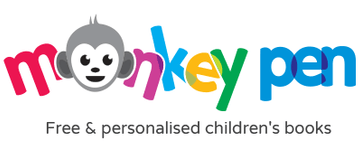Beyond Crayons: Exploring Different Coloring Tools and Techniques
Nov 20, 2025
Coloring is one of the delightful ways for children to express imagination, and it can extend beyond just shading simple shapes using crayons. In this blog, we will see how to use various coloring tools and accept new coloring methods so that kids never feel stuck creating the same thing repeatedly. The aim is to provide evolving artists resources for discovery, development, and passion for art. By giving diverse coloring tools your children can implement and presenting some advanced coloring techniques, you can hold their interest for a long time and improve their skills.
Why expand beyond crayons?
Major kids start with a regular crayon kit, and that is acceptable. Crayons are child-friendly, common, and easy to use. But once you understand how to use it, showing other tools and methods can benefit you in two primary ways:
- Initially, a wide range of techniques and tools keeps things new and happy, so kids stay mindful.
- Next, it supports growing new skills such as movement control, shading, blending, physical coordination, planning, and creativity.
When you explore beyond just filling the shape using a single color, you are ready to learn more advanced coloring methods like layering, blending, adding texture, pattern play, and even mixed media. These techniques do not need structured learning, but they allow development and exploration.
Essential art tools for children’s color work
Let us discuss some of the art tools children can investigate. Here are many with diverse features and how they encourage multiple techniques.
- Colored pencils: These allow more accuracy than crayons. You can color gently or apply more pressure for bold effects. They are fantastic when you like to experiment with smooth shading techniques or feathered shading effects.
- Markers & pens: Bold, bright color, easy to occupy a broader area instantly. They motivate sharp outlines and even shading and can be combined with colored pencils for intricacy.
- Gel pens, metallic/iridescent pens: These are awesome for enhancements, mini sections, and shimmering highlights.
- Watercolor/palette or water-based markers: Giving a color wash or soft layer creates a fresh appeal.
- Mixed tools & accessories: Supplies such as sharpeners, erasers, stencils, textured surfaces, and even decorative elements like stones and stickers can make simple art a hands-on activity.
By allowing kids to use a diversity of supplies, you’re not simply altering the medium; you’re providing access to various coloring methods.
Easy techniques to try now
Here are some realistic methods that suit kids’ artwork and that start the transition into more refined coloring techniques without seeming daunting.
1. Layering and shading:
Use crayons or colored pencils and start shading gently. Start with a light layer, then apply another layer with the same shade or a slightly darker tone to enhance depth. For instance, color a leaf with green, then use dark green over the stem, and switch back to light green again to lighten. This reinforces the concept of light and dark colors.
2. Blending colors: Choose two or three colors of the same shade, like blue, moderate blue, and dark blue. Color one edge with dark blue, another edge with light, and focus the join with gentle pressure to streamline the transition. This provides a gradient effect and sets a good example of advanced coloring methods that can be absorbed early.
3. Texture and pattern play:
Coloring does not just fill in a shape. Practice dabbing, tiny strokes, or even crayon rubbing onto a page. One method known as “frottage,” or crayon rubbing, includes keeping the paper on an even surface and using a crayon to show the finish. Encourage children to try adding spots, stripes, or patterns; it becomes an art, not just coloring.
4. Layering of mixed media and washes:
To fill in detailed shapes, especially, do a light water wash over the top or use a see-through marker to integrate hues. Alternatively, draw using a white colored pencil on a colored background and let the hue softly merge. These techniques present children to layer planning and thinking about effects.
5. Detail work and embellishment:
After key coloring is done, kids can go back with a fine pen, gel pen, or metallic marker to add minute details: stars, dots, highlights, and scribbles that add more contrast. This connects to skill development: being alert, careful, considering final details, and planning their page.
How these techniques support skill development
With a variety of art tools children can use and be forced into new coloring methods, which promotes both creative and problem-solving abilities:
- Fine motor control: Transitioning from large crayon strokes to pencil shading or marker detail strengthens hand coordination.
- Color awareness: blending, layering, and selecting complementary shades improves color sense.
- Patience & planning: more progressive methods demand thinking further.
- Confidence: Gaining expertise in a new tool or technique offers children a feeling of success and supports discovery ahead.
- Creativity and risk‐taking: By announcing pattern play, texture, or mixed media, children understand that coloring does not have any guidelines; this fosters creative expression.
Practical setup for home or classroom
To make this work efficiently, find some tips:
- Provide children a “tool kit” with some coloring pencils, a few markers, gel pens, a waterbrush or water-based marker, and some textured surfaces like a leaf, coin, or rough cloth.
- Give some time completely for exploration: Allocate time purely for exploration: “You color today, but you may only use two crayons and one gel pen.” Boundaries often inspire creativity.
- Motivate children to choose one advanced coloring method at a time, maybe blending or texture rubbing, instead of staggering them with multiple techniques at once.
- Offer good quality pages; if you use water or blending techniques, heavier-weight or mixed-media paper performs better.
- Provide examples. Show how to use dark and light, layer colors, or do a wash. Then encourage them to try on their own.
- Display and celebrate. Ask: “Which method did you try today? What do you like about it? What would you try distinctly another time?” This supports learning.
Taking it further: miniprojects
Find these two mini-project ideas that use tools and techniques together:
- Rainbow animal coloring: Choose an animal drawing. Use three or more tools to color: Begin with a light color to fill, next use a marker for a darker shade, and later add gel pen highlights or dots. Focus on detail, blending, and layering.
- Texture and story page: Encourage the child to create a simple scene like a tree, sky, or ground. Then use rubbings to color the tree bark, wash for the sky, and markers for the characters. Include patterns for accessories and clothing. Concentrate on mixed media, texture, and storytelling.
Why this matters
Most of the coloring worksheets remain at the beginner level, i.e., “fill this design with a single color.” While that method works at times, it can get boring and fail to develop full potential. When children work with advanced coloring methods and new art tools children might not generally use, they are tested, encouraged, and given space to grow. In addition to color, they learn how to think creatively. They explore. They find solutions for small creative challenges. And best of all, they appreciate the process.
Final thoughts
So, another time when you access that pack of crayons, stop and inquire: What could be the other choices for experimenting? Could we explore colored pencils instead, or use a wash or put down texture rubbings? Could we ask the child to even the tone or check the filling with a gel pen for glitter? By revealing fresh coloring methods and allowing kids to discover a variety of art tools children can use, you are providing them more than art time; you are giving them time for imagination, exploration, and growth.
Coloring turns into more than coloring shapes; it becomes an art activity. When children understand how to use different coloring techniques and handle each tool effectively, they develop curiosity, positivity, and artistic skill. Celebrate these easy yet strong strategies for advanced coloring methods, and see your young artists grow.
With free coloring pages printable at Monkey Pen, children can explore a lot of tools and coloring techniques and cultivate their growth in art and creativity. Also, check out our coloring books collection for themed illustrations.
You can also use these coloring strategies on free color-by-numbers activity sheets and dot-to-dot pages by downloading them from the website.


